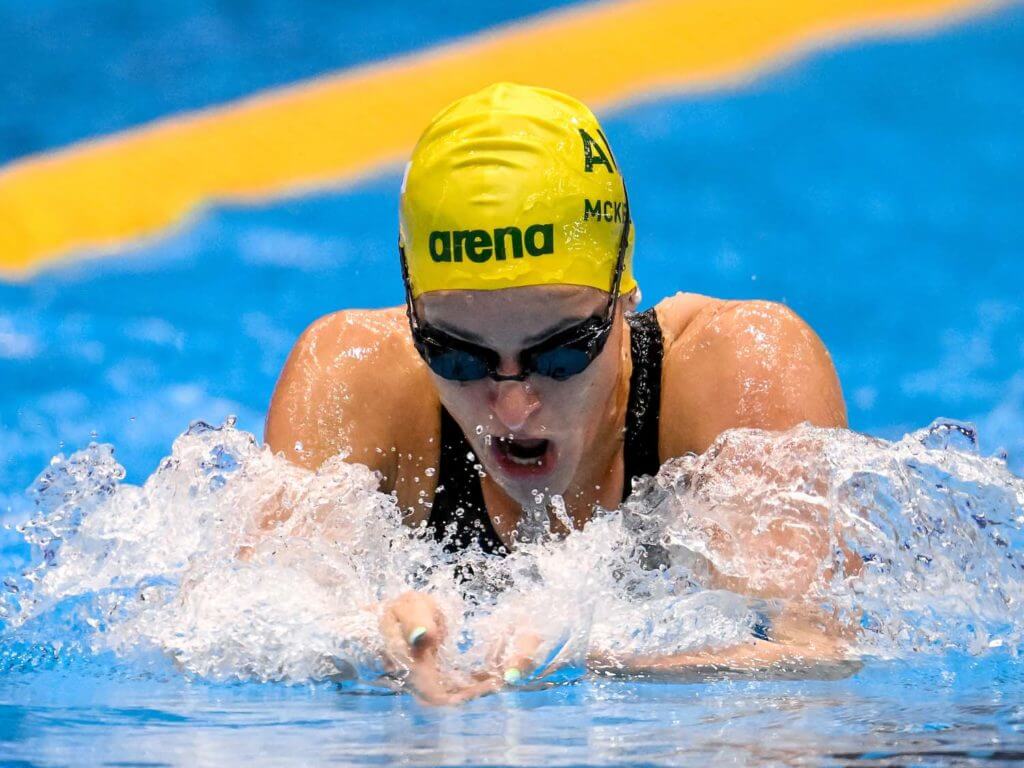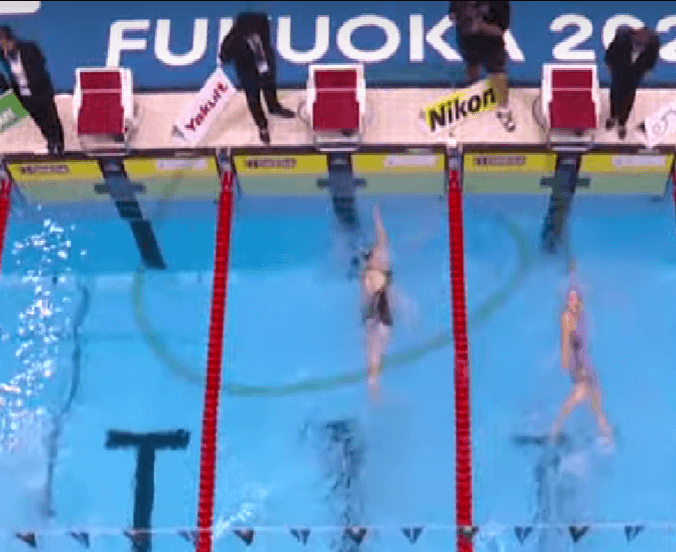Kaylee McKeown 200 IM Disqualification Questioned By Swimming Australia; Is Officiating Inconsistent?

Editorial content for the 2023 World Aquatics Championships is sponsored by FINIS, a longtime partner of Swimming World and leading innovator of suits, goggles and equipment. Kaylee McKeown 200 IM Disqualification Questioned By Swimming Australia; Is Officiating Inconsistent? Australia’s Kaylee McKeown lost her chance at competing for a world title in the women’s 200 IM when she was disqualified in the semifinals for an illegal backstroke-to-breaststroke turn. Officials said that McKeown had rolled past vertical (closer to her stomach than her back) prior to touching the wall McKeown had touched in a time of 2:09.30, which would have been good enough for the third seed in the final, but instead, she was one of three DQs from the first semifinal. Swimming Australia responded, and the organization pulled no punches about its opinion of the call. In a press release from Swimming Australia, McKeown said, “We have footage and other angles that say otherwise to what the officials saw.” After a protest of the DQ was overturned, Swimming Australia head coach Rohan Taylor said, “I disagree, 100 per cent.” McKeown’s DQ was initiated through video review, a technology that caused controversy at last month’s U.S. Nationals amid a string of DQs, particularly in breaststroke events, for violations invisible to the naked eye above the water. Most significantly, 400 IM Olympic silver medalist Emma Weyant was disqualified after replay found a small dolphin-kick motion in her breaststroke. Replay footage from the Worlds semifinal seems to disagree with McKeown and Taylor’s assessments, at least according to the letter of the law. World Aquatics rule 9.4 states, “Each section must be finished in accordance with the rule which applies to the stroke concerned.” Because the swimmers do not officially finish backstroke until they touch the wall for the transition, the swimmer must be on their back — or at least closer to the back than the stomach. The crossover turn that McKeown and most other medley swimmers perform in competition allows them to replicate a typical backstroke flip turn while following medley rules. They touch the wall with their raised hand before initiating the flip, a maneuver requires significant practice to get the timing correct. The 22-year-old Queenslander initiates her turn marginally early, and once that happened, her body remained stationary as she glided to the wall. During a replay of the critical moment on the NBC Sports broadcast of the World Championships, 23-time Olympic gold medalist and guest commentator Michael Phelps said, “It’s literally like she’s flipping for backstroke. It’s like she’s going for a backstroke turn.” Phelps added, “She looks like she’s going to flip and then almost forgot, was like, ‘Oh no, this is the 200 IM, not the 200 back.'” But does every other swimmer execute the turn perfectly and legally every time.? Probably not. Rolling past vertical prior to the touch is common in swimming, but swimmers are rarely DQed for the action. The turn happens so fast that it’s very difficult for an official or any human to notice without the benefit of slow-motion replay. So some tiny violations probably slide past the view of those responsible for judging. With video replay and underwater footage used to initiate calls, that’s no longer the case, and some coaches and swimmers have not appreciated the adjustment. “When you’re watching video you can nitpick any little thing. But obviously they felt she did a dolphin kick and the call was made,” U.S. coach Anthony Nesty said at U.S. Nationals. In this image taken from NBC Sports’ broadcast American swimmer Alex Walsh appears to be past vertical prior to touching the wall for her flip into breaststroke. Essentially, this is the exact same violation for which McKeown lost her chance to race in the final. However, officials did not disqualify Walsh, and she earned the silver medal in the race. If replay is allowing officials to judge these crossover turns more closely, why was Walsh not flagged for the same violation as McKeown? What’s the difference? Even the replays do not show anything clear. At practically every swim meet on any level, there will be disqualifications that coaches and swimmers disagree with. And officials might not get every single call correct; they are human and make mistakes, just like anyone else. But in the name of fairness, each swimmer should be judged according to the same rules and standards, especially when a tool like instant replay is available. Following the women’s 200 IM in Fukuoka, there are lingering doubts.

 But the most significant issue would be if the increased scrutiny of the backstroke-to-breaststroke turn is inconsistently applied. Those concerns are warranted based on what unfolded in Monday’s 200 IM final.
But the most significant issue would be if the increased scrutiny of the backstroke-to-breaststroke turn is inconsistently applied. Those concerns are warranted based on what unfolded in Monday’s 200 IM final.




